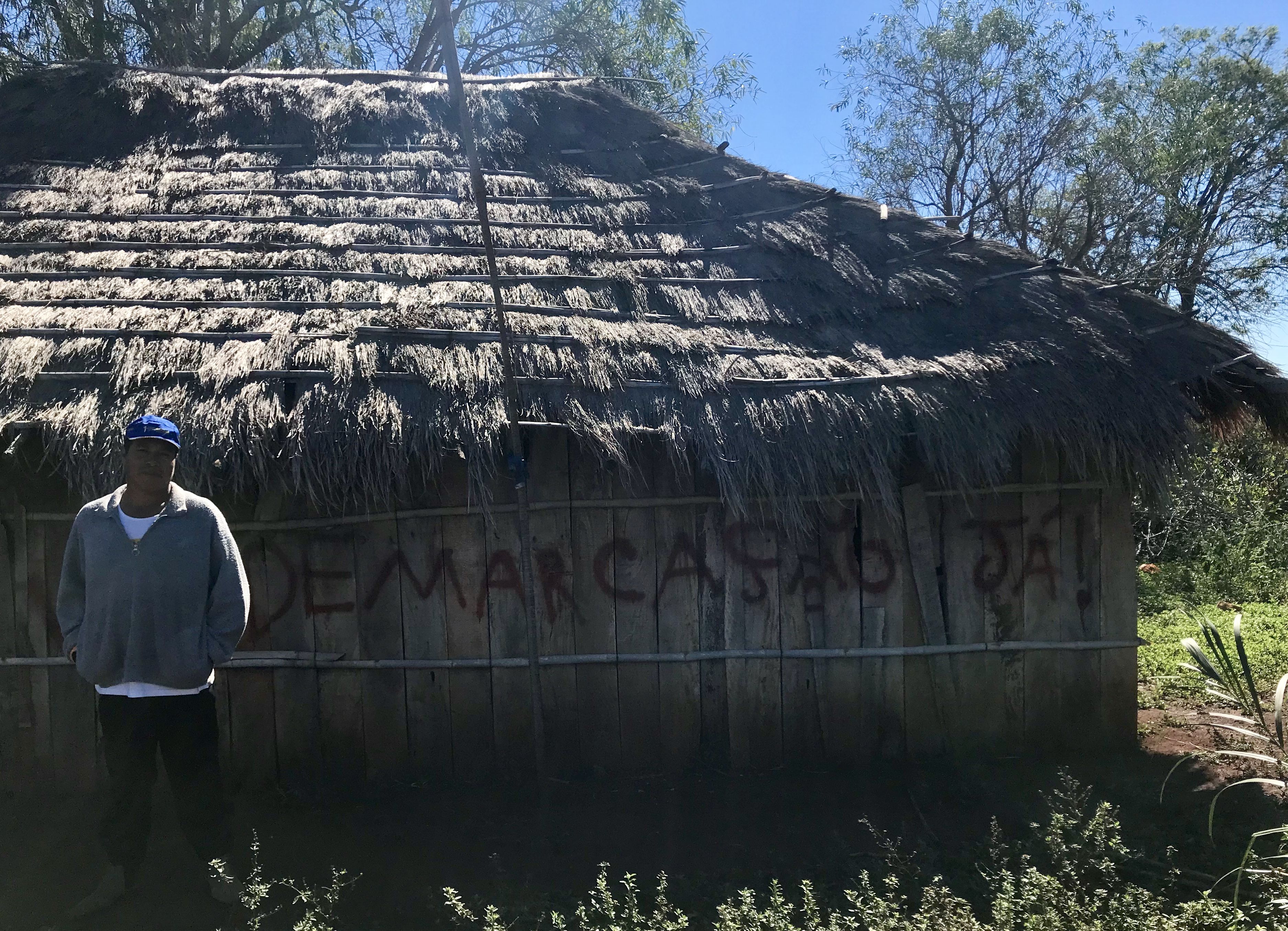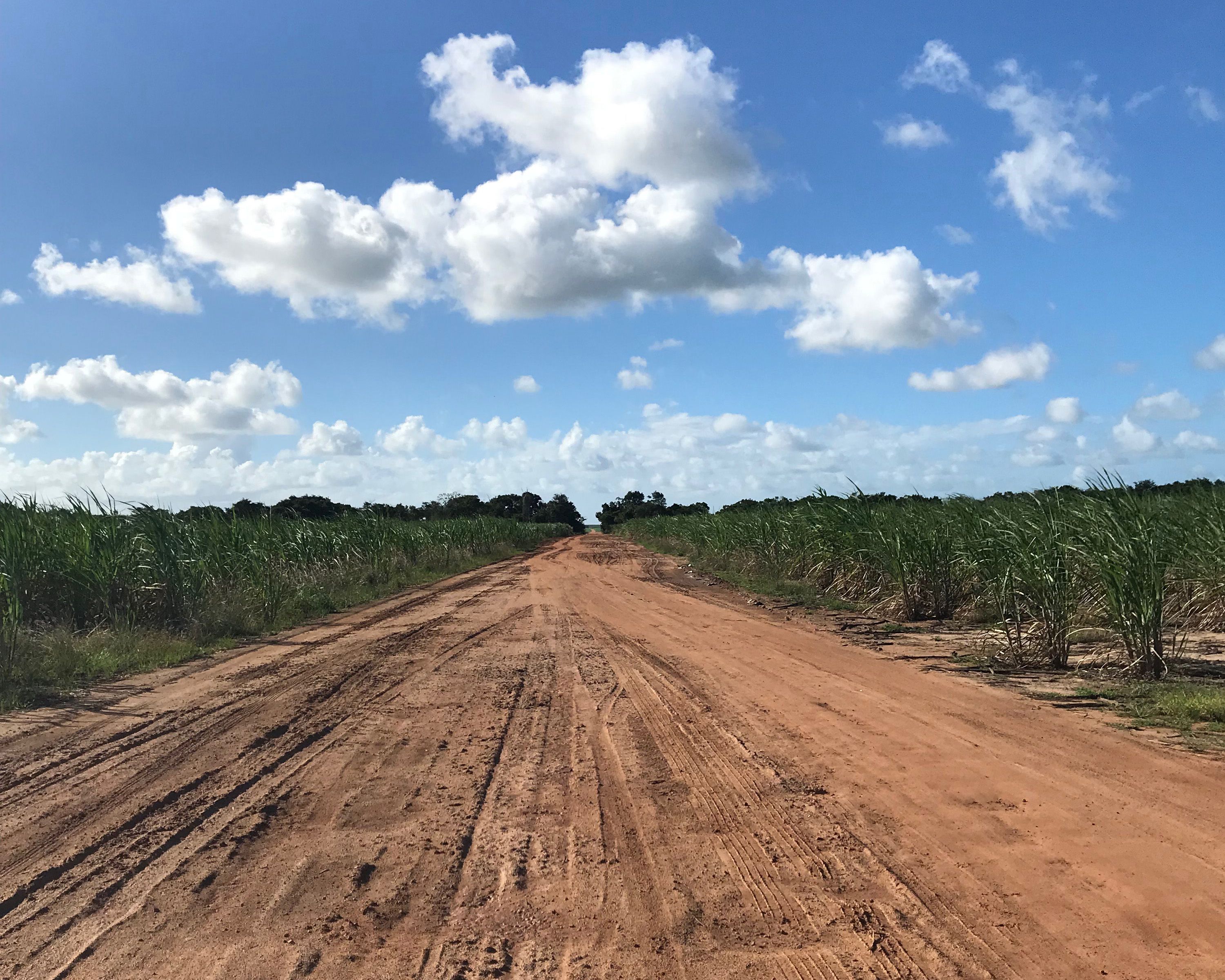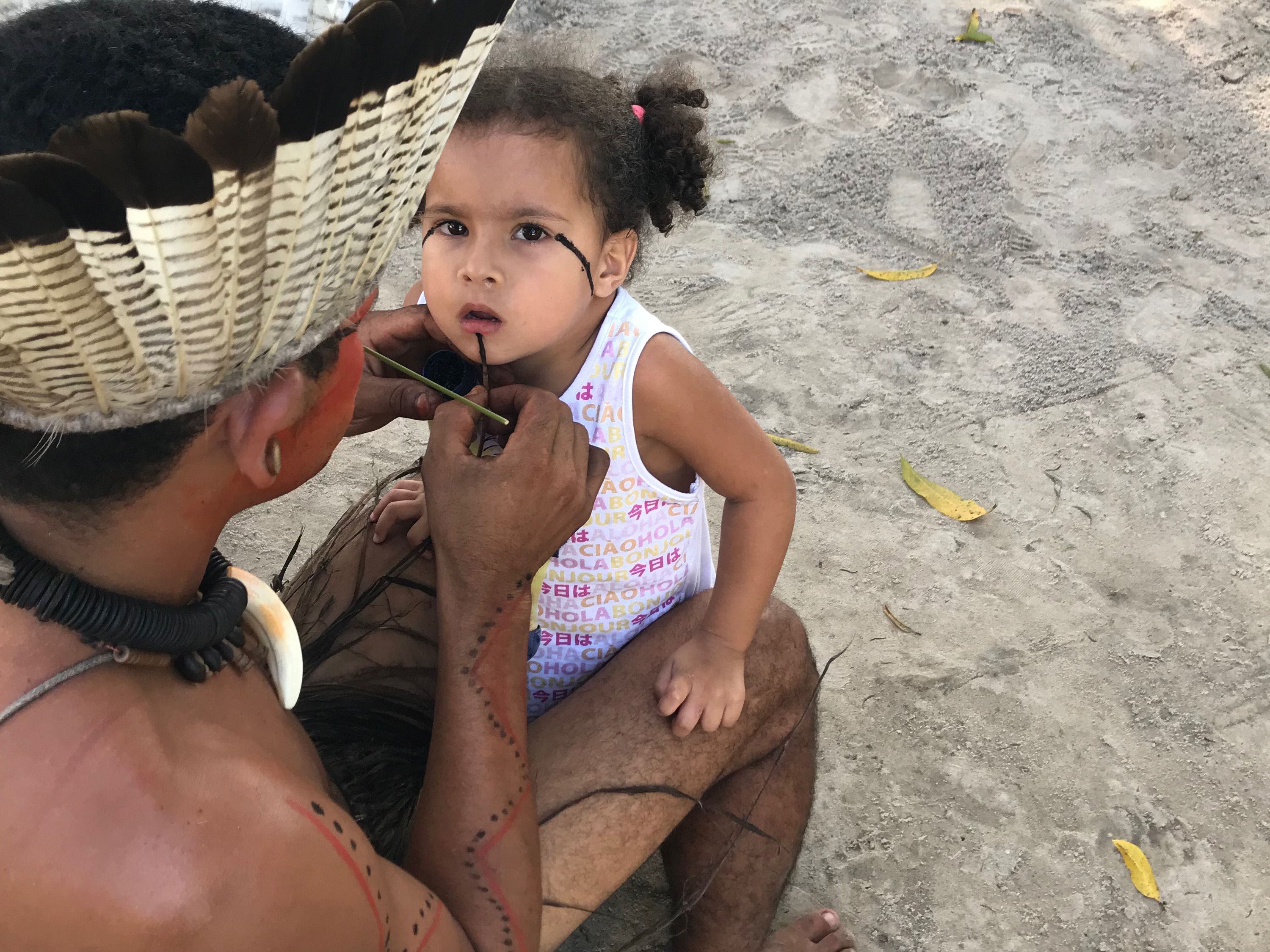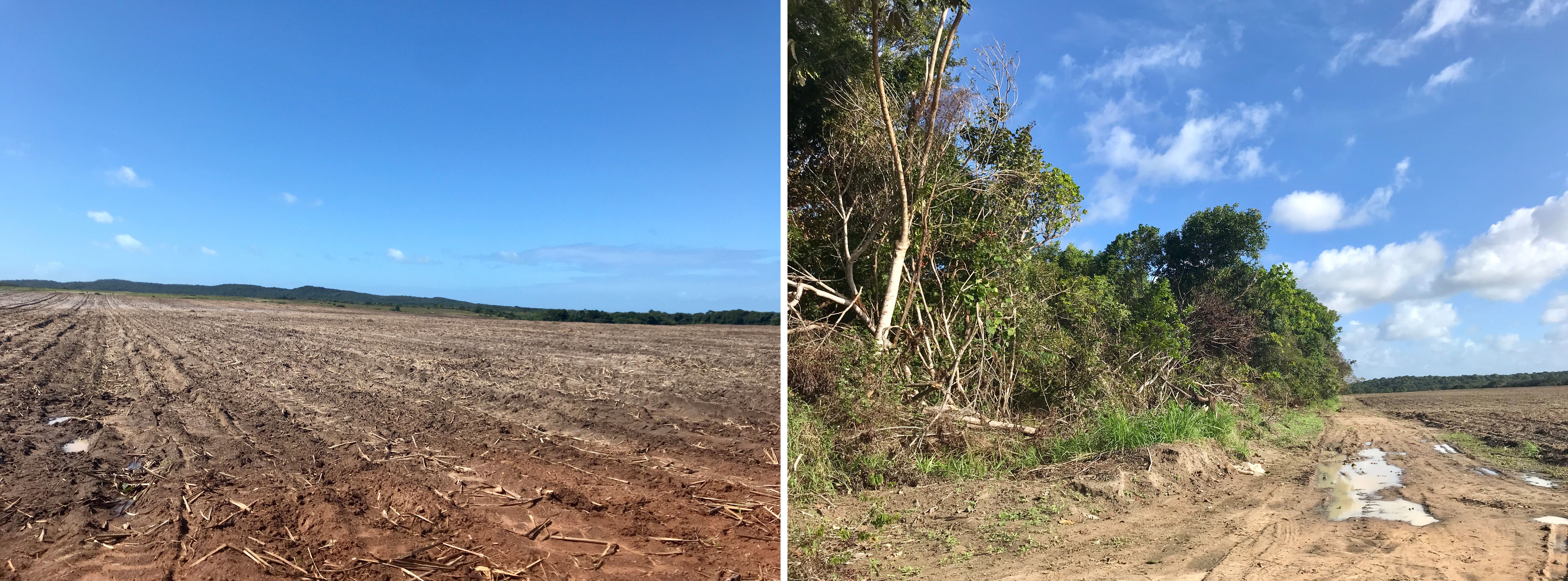When established in 1988, article 231 of Brazil’s newest constitution marked a watershed moment in the country’s bloody past of persecution against its Indigenous people.
For the first time in Brazil’s history, the words “integration,” “assimilation,” and “adaptation” were not present in describing the nation’s vision regarding the future of its Indigenous population. Instead, a path for the conservation of its Indigenous culture was laid out. Article 231 of the 1988 Brazilian Constitution reads:.
It is recognized that the indigenous peoples have the right to their social organization, customs, languages, beliefs and traditions, and their original rights over the lands that they have traditionally occupied, it being the duty of the federal government to demarcate these lands, protect them and ensure that all their properties and assets are respected.
In theory, from 1988 onward, the Federative Republic of Brazil officially recognized the need to preserve its Indigenous population along with their traditions and cultural heritage—a population that was in danger of extinction after plummeting to an all-time low of 70,000 individuals in 1957 due to persecution, hate crimes, and marginalization.
However, in practice, the current reality of Indigenous people in Brazil looks strikingly different.
In the cultural and political scenario that followed the 1988 constitution, there was provided little to no space for the voices of Indigenous people in the policy-making sphere. This resulted in a general complacency stance by the government that was more focused on remedying conflicts with the agribusiness industry rather than preventing them from happening.
Now, the expectation is that under newly elected President Jair Bolsonaro, the government will take a more active stance in managing Indigenous territories nationwide. Yet, it might not be a stance in favor of the country’s Indigenous people.
“With the changing of presidential administrations, we were afraid that the Funai [the government’s agency currently responsible for protecting Indigenous people and their rights nationwide] would not even exist … As far as policy-making goes, it is not an interest of this government in focusing on [the officialization of new Indigenous territories],” said a Funai federal public servant in Brasília that requested to remain anonymous for fear of backlashes within the government.
“I have received reports from Indigenous groups about a rise in the tensions with farmers [ever since Bolsonaro took over]. Before, people would drive by shooting to the skies to scare Indigenous people. Now, they are shooting in whatever direction and just stay there [in protected Indigenous territories] laughing. There's a general feeling that whatever is done to Indigenous people will be met with impunity,” the federal servant later added.
The Struggles for Land Recognition
“We’ve had three conflicts with farmers [recently]. In 2005, we were thrown out by farmers. In 2009, we were displaced from Ytay [one of the villages traditionally occupied by the Guarani-Kaiowás)], and 2015 once more another attack, then we had to move here,” said Cacique (Chief) Ezequiel João Kaiowá of a Guarani-Kaiowá settlement in Douradina, Mato Grosso do Sul (MS). “There were [gun]shots, real [gun]shots towards our community. [Farmers] don’t talk about resettlements [when describing us]; they call us trespassers. It seems as if we came from a different country to invade this state and these communities.”
Ezequiel, much like many of his counterparts nationwide, finds himself waiting on an ongoing demarcation process started in 2006 that is supposed to demarcate 12,196 hectares (ha) to be occupied by around 300 Indigenous families in the region.
“We need [the demarcation] to really decree our history [to outsiders] that we’re from here. Our grandmothers, great grandmothers, and great-great-grandmothers lived here. So, we need this land back. We’re not asking to take over the whole state; we don’t need that. We need our traditional land,” said Ezequiel. “I don’t even have land to work on! We are on our own to find ways to sustain our families. I used to work on the sugarcane plant. Nowadays, I freelance between gigs sometimes. It would be great to have land to plant some eucalyptus, native plants, medicinal herbs, to create a beehive and get some honey. I want to do all of that, but our situation makes it hard.”
Traveling around Mato Grosso do Sul, you can hardly miss signs of the strong influence that Indigenous culture has on the state’s history. From the name of cities that derive from words in Tupi-Guarani like Ponta Porã (beautiful edge), Itaporã (beautiful stone), Caarapó (yerba mate root) and Guaçu (large), to more subtle signs like Indigenous painting patterns that inspire the local fashion and art.
Sandwiched between the city limits of Dourados, MS, and private farms are the shacks of another Indigenous group fighting for land recognition, the Nhuverá Guaçu village.
Cacique Ambrosio Ricardi, also Guarani-Kaiowá, explains that safety and basic health conditions are his main concerns for the families of Nhuverá Guaçu. Although there have been no recent direct conflicts between farmers and Indigenous groups, Ambrosio recalls a recent attack by five members of the neighboring Indigenous village, Bororó, who, he says, were armed and sent to his village on behalf of local farmers.
Ambrosio recounts that on the night of June 7, 2019, after calling the police and aiding a village member that was beaten down by the same group, he too became a victim of their violence.
“I was waiting for the authorities to come, then Joel Vera [one of the armed individuals] found me and said, ‘Ambrosio I have things to settle with you.’ As soon as he finished saying it, he started kicking me here [points to the chest]. Thankfully just the tip hit me; it wasn’t a full blow. I started running, shoving things out of my way, and I fell. After I fell, he raised his foot and kicked me to break it [points to his healing broken jaw],” said Ambrosio remembering the pain. “From there, he dragged me to another shack, while the blood was dripping away. A group from here went to pick me up and brought me back to my shack. When I got back a car from the fire department took me to the hospital.”
“What threatens us the most, [speaking] on behalf of the community, is that they have guns. These guns they have been acquired to do bad things to the community in favor of the farmers,” Ambrosio later added.
The Nhuverá Guaçu is occupied by Ambrosio and a few other families and is not undergoing any demarcation process at the moment. Ambrosio explained that they are waiting to move to a permanent area near their settlement as was promised by the federal police. No records were found on the National Indian Foundation’s (Funai) database about this new area.
According to the Cartography of Attacks Against Indigenous People’s (CACI) database, from 1988 to 2017, 1042 cases of murder of Indigenous people in Brazil have been registered . Four hundred and fifty-seven of those murders were in the state of Mato Grosso do Sul alone: an average of 15.7 Indigenous murdered per year.
In total, there are 118 ongoing demarcation processes accounting for 9.79 million ha of land with Indigenous presence. One hundred and fifteen more areas still need to undergo an assessment phase to delimit the size of new Indigenous territories (all data according to Funai’s database).
Tug-of-War on the National Level
When recently elected President Bolsonaro attempted twice to move the powers to demarcate Indigenous territories from the Funai to the Ministry of Agriculture, he raised serious concerns over the future of Indigenous people under his government.
Bolsonaro has also shown he’s keen on the idea of exploiting some of the natural riches located within Indigenous territories to boost the agribusiness sector and has also promised that under his government “there will not be a centimeter more of Indigenous land [demarcated].”
“Brazil lives on [the production] of commodities—sooner or later the farmers will lose their patience and will take care of their lives. They will sell the land, invest [money] here or outside of the country, and get on with their lives. We will live on what? What do we have besides commodities?” Bolsonaro said during a press conference on July 29, 2019. “[Indigenous reserves] are rendering our business infeasible.”
However, politicians and individuals within environmental and Indigenous rights coalitions see in Bolsonaro’s rhetoric and actions a retrograde vision of Indigenous integration that poses a threat to the advancements conquered through the 1988 constitution.
“Bolsonaro’s [public] policy regarding Indigenous and environmental affairs is not propositive. The government has not presented a plan regarding either Indigenous people or the environment. The Bolsonaro government has proposed dismantling proposals when it comes to rights guaranteed by the constitution and that is reflected in [current] public policies,” said Ana Paula Soltomaior, parliamentary secretary under the only Indigenous Federal Deputy in the chamber, Joenia Wapichana.
The creation and maintenance of Indigenous territories are also vital for the preservation of Brazil’s rich ecosystem.
“Indigenous territories are fundamental to the equilibrium of the Brazilian biome. Most of the rainforest’s conservation areas that we have today in the Amazon are within Indigenous territories. So, not protecting them is the same as not protecting the Amazonian biome,” said Danicley Aguiar, a member of Greenpeace Brasil’s preservation efforts in the Amazon rainforest. “These proposals [by President Bolsonaro] end up reinforcing a false dichotomy that Indigenous territories and the Brazilian agribusiness industry cannot coexist.”
A Cry of Resistance
Nearly 2200 miles northeast of Dourados, MS, near the towns of Canguaretama and Baía Formosa, Rio Grande do Norte (RN), two other Indigenous groups fight in similar conditions to their counterparts near the Paraguayan border: the Potiguara villages of Catu and Sagi/Trabanda.
Unlike in Mato Grosso do Sul, the state of Rio Grande do Norte does not have as strong an Indigenous influence in its history. Given the state’s coastal position, most of the Indigenous groups that lived in the area suffered persecutions as a result of the strong Portuguese presence in the Northeast of Brazil. Many believed that there were no active Indigenous villages within the state: it was not until 2005 that a census recognized the presence of Indigenous communities.
“The 2000 census of the Brazilian Institute of Geography and Statistics (IBGE) estimated a minimum population of 2000 and some people self-declared Indigenous, but with no recognition of a village. The census only counted people scattered in the capital of the state and other cities. So, [in 2005] we were challenging this census saying that we were in fact also organized in our own villages,” said Cacique Luiz Katu of the Catu village. “We had such a strong persecution history in Canguaretama to the point that one of our defense strategies was to say that we were not here. So, for a long time [our ancestors] remained silenced. If you said that you were from the Catu, you could not access the city, you would not have peace.”
Now, the 11 Indigenous communities in the state are fighting for the recognition of their presence and heritage by supporting the official demarcation of the state’s first Indigenous territory in the village of Sagi/Trabanda.
In 2016, after countless requests, Funai opened a request to create a technical study to recognize the area of Sagi/Trabanda as inhabited by Potiguaras. There has also been outside pressure from surrounding large-landed owners, including death threats towards Cacique Manoel, that have resulted in a suspension of the technical studies in the area. In the past, Manoel has had to deal with the destruction of houses and other violent actions towards his village.
The sugarcane plant, Vale Verde, the biggest landowner in the area, believed by the locals to be the source of the death threats, did not respond to a request for comment.
The technical study group should restart their work soon—however, the worry is that its work will not amount to land demarcation any time soon.
"When you have [Bolsonaro] saying that he will not demarcate a single more centimeter of Indigenous territory, it creates within the demarcation process itself a feeling that the efforts made are not going too far. Imagine going through all the phases and steps, it ends with the president of the republic. He is the one signing it. He is the one that will say, I will homologate [this land] or not,” said anthropologist José Glebson Vieira, who is leading the technical studies on the Sagi/Trabanda area.
Over its first seven months, no new Indigenous territory has been homologated—or approved—under Bolsonaro’s government, setting a bad precedent for the next three and a half years while the Indigenous groups wait to have their lands recognized by the union.
In facing so many uncertainties in their future and the future of their ancestral land, Indigenous groups from both sides of Brazil find hope in an all-too-familiar situation for them: resistance.
“We want to stay firm and resist. Resist for all our fights. Our fight for the demarcation, for education, and for better health conditions. We are a resistance now,” said Ezequiel.
“The Indigenous peoples, and I don’t speak only for myself, Luiz Katu Potiguara, I speak on behalf of the outcry I have been listening to, that the Indigenous groups are prepared to resist any setback that might being prepared against us. We will not accept that our territories stay unrecognized,” said Katu. “We’re fighting to keep [our rights]. The indigenous population is ready to give the cry of resistance.”




